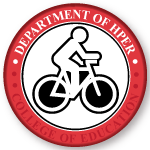Author ORCID Identifier
Document Type
Article
Publication Date
7-30-2019
Publication Title
Cogent Social Sciences
Volume
5
Issue
1
Abstract
Introduction: Early childhood is an optimal time to support the development of physical activity and healthy eating behaviors. As over half of children are cared for in family child care homes and child care centers it is crucial to ensure these behaviors are being supported in the childcare setting. One such process that supports provider’s education and implementation of healthy behaviors in the childcare setting is the Nutrition and Physical Activity Assessment in Child Care (Go NAP SACC). However, after participation in Go NAP SACC, little is known regarding how to further support providers in their promotion of healthy behaviors. More research is needed in the United States (U.S.), especially in rural populations, to understand providers’ reported perceptions of health behavior promotion after receiving Go NAP SACC training and implementing best practices. Purpose: The purpose of this study was to assess the nutrition and physical activity reported practices and perceptions of U.S. rural and urban providers who had received Go NAP SACC training and implemented Go NAP SACC best practices within the last two years. Methods: Semi-structured interviews were completed with 12 providers (6 rural, 6 urban) in the Midwestern U.S. based on constructs of the Social Cognitive Theory (i.e., personal behaviors, cognitive factors, and socioenvironmental factors). Data were analyzed via immersion and crystallization and validated with reflexivity and peer debriefing. Results: Findings indicated Go NAP SACC trained providers in both rural and urban areas felt they had the resources and knowledge needed to promote physical activity and healthy eating. However, they still struggled with barriers related to adequate space for activity, funding for equipment, parent engagement, and health promotion among staff and parents. Conclusion: Incorporating opportunities for follow-up interactions after initial training may help reduce the barriers that persist after Go NAP SACC training. In addition, future interventions should consider the factors of parent engagement and staff wellness during intervention development and execution.
Recommended Citation
Snyder, Kailey; Rida, Zainab; Hulse, Emily; Dev, Dipti; and Dinkel, Danae, "Exploring rural and urban Go NAP SACC trained child care providers perceptions and needs regarding the promotion of physical activity and healthy eating" (2019). Health and Kinesiology Faculty Publications. 47.
https://digitalcommons.unomaha.edu/hperfacpub/47
Creative Commons License

This work is licensed under a Creative Commons Attribution 4.0 License.


Comments
© 2019 The Author(s).
https://www.tandfonline.com/doi/full/10.1080/23311886.2019.1650412